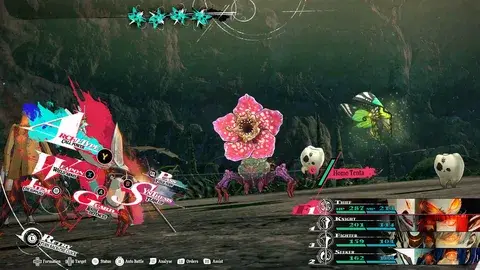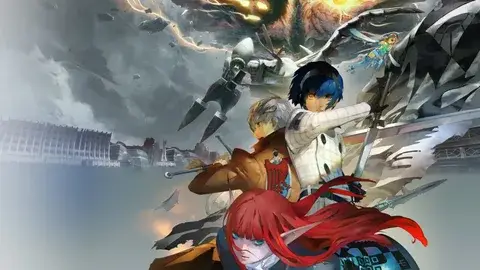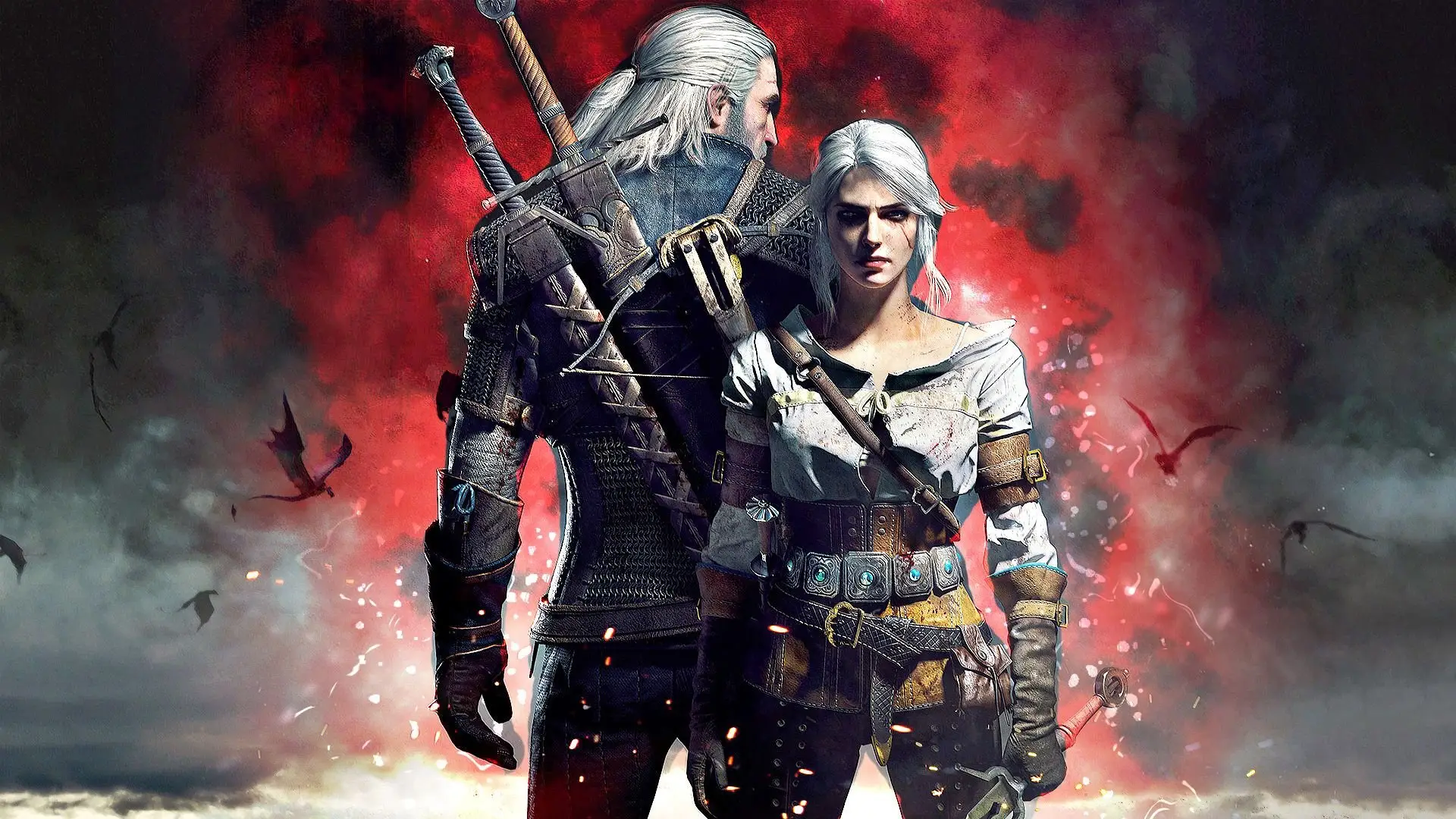Every year, the gaming industry awaits the largest awards ceremony. The Game Awards 2024 was no exception. Among many contenders, the game Metaphor ReFantazio stood out, winning the title of the best RPG of the year. This project from Atlus combined a unique artistic style, innovative mechanics and a deep story. It became an example of what a next-generation role-playing game should look like.
A well-deserved victory at the annual ceremony is not just recognition of the developers’ efforts, it is a signal for the entire industry: the RPG genre continues to evolve. A mixture of fantasy, social elements and non-linear storytelling created a product that competed on equal terms with the most famous games of the year.

Why Metaphor: ReFantazio became the best RPG game of the year
The victory was not an accident. The concept set new standards of quality, offering unique mechanics and an amazing atmosphere. Created by the creators of Persona and Shin Megami Tensei, it absorbed the best of Japanese role-playing traditions, adding modern elements that made the gameplay more exciting and dynamic.
An important feature was the deep plot, intertwining themes of power, loyalty and the struggle for ideals. At the center of the story is the main character, who must overcome obstacles in a fantasy kingdom full of magic and intrigue. Each decision affects the development of the plot, and the non-linearity allows you to experience unique events with each new playthrough.
The opinions of critics and editors of leading gaming publications, such as Gamespot, agreed on one thing: the game Metaphor: ReFantazio became the best RPG of the year due to the quality of development and a unique combination of tradition and innovation. The atmosphere holds attention until the final credits, and the characters are remembered for a long time.
Mechanics and gameplay of Metaphor: ReFantazio
The project is based on a turn-based battle system, but with elements of strategy and tactics. Players are given a wide range of options for customizing heroes and their abilities. Using combinations of attacks, magic spells and special techniques allows you to create an individual combat style. Each fight requires careful planning and analysis of the enemy’s weaknesses.
The world consists of several kingdoms, each of which has its own culture, political systems and secrets. Exploring these locations allows you to open new quests and find unique artifacts. The gameplay includes elements of a social system, where interaction with NPCs affects the development of the plot. The user can form alliances, participate in political intrigue and influence the outcome of key events.
Artistic style and atmosphere of Metaphor: ReFantazio: features of the best game
 The character design is made in a recognizable manner, which is combined with a dark and mysterious environment. The kingdoms are filled with details: from architecture to vegetation, which creates the feeling of a living and breathing world.
The character design is made in a recognizable manner, which is combined with a dark and mysterious environment. The kingdoms are filled with details: from architecture to vegetation, which creates the feeling of a living and breathing world.
Particular attention is paid to animations and spell effects. Each use of magic is accompanied by bright flashes of light and dynamic movements of the heroes. Such elaboration makes the battles spectacular and exciting. The artistic style emphasizes the contrast between light and darkness, creating a unique atmosphere of struggle and hope.
The musical accompaniment also plays an important role. The composer uses orchestral arrangements with elements of electronic music to convey the emotional intensity of the events. In each episode, the melody emphasizes the mood – from anxious tension to triumphant joy.
What makes Metaphor: ReFantazio stand out from the competition
At The Game Awards 2024, in addition to Metaphor: ReFantazio, such hits as Final Fantasy XVI and Baldur’s Gate 3 competed for the title of best RPG game. Each of these projects has high quality, a detailed world and exciting gameplay. However, it was Metaphor: ReFantazio that was able to combine unique elements that took it to a new level and ensured a well-deserved victory. Why?
- Deep nonlinearity. Every decision made has a direct impact on the plot and the world of the game. The developers from Atlus created a system where choices are not limited to obvious “good” or “evil”. The protagonist’s actions lead to unexpected consequences that manifest themselves in the development of characters, the discovery of new locations and final scenes. For example, alliances with different factions can completely change the political landscape of the kingdom. This approach allows for a unique experience with each new playthrough, and the plot forks encourage you to explore all possible options for the development of events.
Innovative combat system. - The mechanics combine classic elements of turn-based battles with a deep strategic component. Each fight requires careful planning and analysis of the enemy. The player can combine attacks, use magic spells and activate the unique abilities of their characters. Tactical depth is manifested through a system of enemy weaknesses, positioning on the battlefield and the ability to combine attacks to create powerful combos. Unlike standard turn-based battles, here the dynamics are maintained due to the constant need to make decisions and adapt to the situation.
- Social mechanics. Interaction with NPCs goes far beyond standard dialogues. Social mechanics in the project allow the user to form relationships, enter into alliances and influence the fate of the heroes. The development of these connections opens up new storylines, side quests and even unique abilities for comrades in arms. For example, helping a certain character can result in them becoming an ally at a critical moment or providing access to rare resources. These elements are reminiscent of the bond system from the Persona series, but implemented on a larger scale, affecting the fate of entire kingdoms.
While many RPG games focus on dynamic action scenes and spectacular special effects, the best game by far, Metaphor: ReFantazio, focuses on storytelling and character development. The storyline dives into emotional and philosophical questions, forcing you to think about the consequences of your decisions.
Who else won at The Game Awards 2024
Many projects received well-deserved recognition at the ceremony. In addition to the triumph of Metaphor: ReFantazio, the following best games took home awards:
- Astro Bot — winner in the Game of the Year category.
- Black Fantasy — best project with outstanding design.
- Baldur’s Gate 3 — victory in the Best Multiplayer Game category.
The concepts showed a variety of genres and approaches. Each victory became a symbol of the developers’ achievements and their contribution to the development of the industry.

Conclusion
 The victory of the best game Metaphor ReFantazio at The Game Awards 2024 is recognition of a new era of RPG. The project showed that the genre continues to evolve, offering players deep stories, innovative mechanics and stunning visual style. This triumph inspires developers to create even more ambitious projects, and users – to new exciting adventures.
The victory of the best game Metaphor ReFantazio at The Game Awards 2024 is recognition of a new era of RPG. The project showed that the genre continues to evolve, offering players deep stories, innovative mechanics and stunning visual style. This triumph inspires developers to create even more ambitious projects, and users – to new exciting adventures.
 en
en  ru
ru  de
de  ar
ar  es
es  hi
hi  fr
fr  nl
nl  it
it  pt
pt  el
el 









